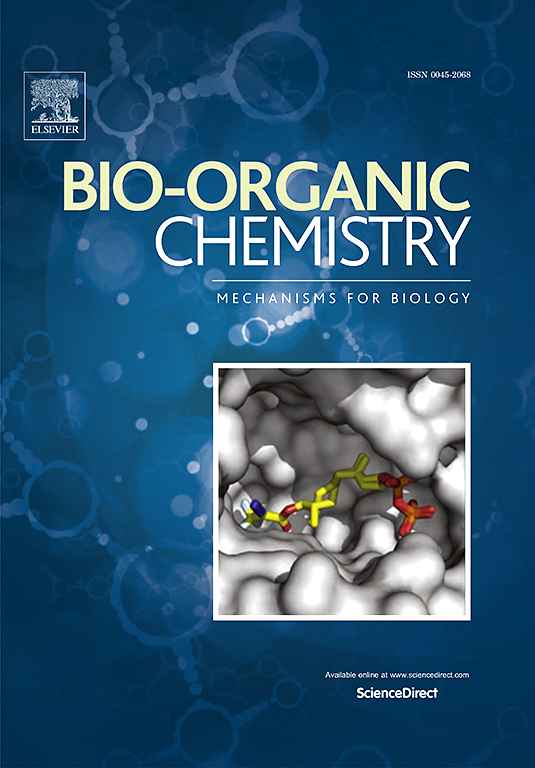Discovery new marine-derived terphenyllin derivatives as potential antifoulants through structural optimization
IF 4.5
2区 医学
Q1 BIOCHEMISTRY & MOLECULAR BIOLOGY
引用次数: 0
Abstract
Marine biofouling remains a global problem, harming the maritime industries and ocean's ecosystem. Toxic antifoulants caused serious environmental pollution, which may enter human body through the food chain and affect human health. We searched for antifouling active compounds from the marine compound library, and a natural p-terphenyl metabolite, terphenyllin (1) and its derivatives (2–8) attracted our attention. Two 2′ or 4″ hydroxy group etherified derivatives (4 and 5) of terphenyllin showed antialgal activity. To improve its activity, twenty-four new terphenyllin derivatives (9–21, 23–27, and 29–34), along with two know derivatives (22 and 28), were designed and semisynthesized by halogenation, etherification, and acylation reactions. All the compounds were evaluated for their antifouling activity against diatoms Navicula Exigua, N. Leavissima, Amphora Ovalis, Skeletonema Costatum, and Nitzschia closterium f. minutissima. Twelve compounds (9–11, 19, 22–25, 28, 30–31, and 34) displayed antialgal activities with EC50 values from 1.2 to 9.8 μg/mL. Especially, compounds 10, 11, and 25 exhibited promising broad-spectrum antifouling activity (EC50 = 1.2–3.6 μg/mL) with lower ecotoxicity (LC50 > 150 μg/mL), which were approximately equivalent to the commercial antifouling agent Econea (EC50 = 0.5–1.1 μg/mL). It was worth noting that compound 9 (EC50 = 2.0 μg/mL, LC50 > 150 μg/mL) showed potential antifouling activity against the settlement of the macrofouling species Mussel Mytilus edulis. The preliminary structure−activity relationships of these compounds were also discussed. In conclusion, this study provided promising antifouling compounds, which were poised for further development as new environmentally friendly antifoulants.

求助全文
约1分钟内获得全文
求助全文
来源期刊

Bioorganic Chemistry
生物-生化与分子生物学
CiteScore
9.70
自引率
3.90%
发文量
679
审稿时长
31 days
期刊介绍:
Bioorganic Chemistry publishes research that addresses biological questions at the molecular level, using organic chemistry and principles of physical organic chemistry. The scope of the journal covers a range of topics at the organic chemistry-biology interface, including: enzyme catalysis, biotransformation and enzyme inhibition; nucleic acids chemistry; medicinal chemistry; natural product chemistry, natural product synthesis and natural product biosynthesis; antimicrobial agents; lipid and peptide chemistry; biophysical chemistry; biological probes; bio-orthogonal chemistry and biomimetic chemistry.
For manuscripts dealing with synthetic bioactive compounds, the Journal requires that the molecular target of the compounds described must be known, and must be demonstrated experimentally in the manuscript. For studies involving natural products, if the molecular target is unknown, some data beyond simple cell-based toxicity studies to provide insight into the mechanism of action is required. Studies supported by molecular docking are welcome, but must be supported by experimental data. The Journal does not consider manuscripts that are purely theoretical or computational in nature.
The Journal publishes regular articles, short communications and reviews. Reviews are normally invited by Editors or Editorial Board members. Authors of unsolicited reviews should first contact an Editor or Editorial Board member to determine whether the proposed article is within the scope of the Journal.
 求助内容:
求助内容: 应助结果提醒方式:
应助结果提醒方式:


